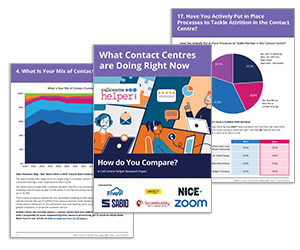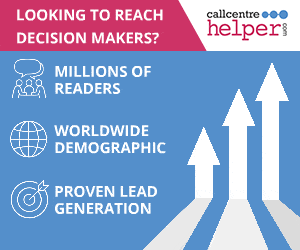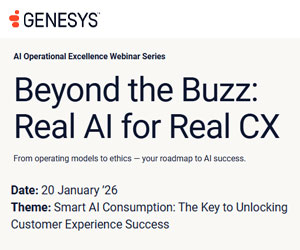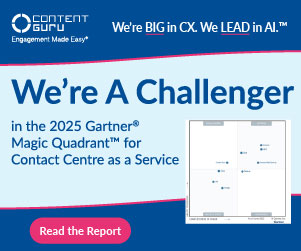Kevin McGachy at Sabio unpacks how Agentic AI is set to transform contact centres, what it really means for human roles, and the new success metrics leaders need to measure in an AI-first era.
There’s no doubt that Agentic AI will transform contact centres.
What’s less clear – and rarely acknowledged head-on – is how much of that transformation will impact the size, shape, and role of the human workforce.
According to The Inner Circle Guide to Agentic AI by ContactBabel, fewer than half of contact centres see headcount reduction as a primary objective. That suggests a deliberate shift in narrative: the focus isn’t overtly on removing people, but on removing friction.
Why Agentic AI Is Different – And Why It Matters
Agentic AI isn’t just another virtual assistant. It doesn’t wait for instructions. It interprets, reasons, takes action, and learns from outcomes.
And most importantly, it operates with autonomy to complete end-to-end tasks – not just offer next-best suggestions.
This is a step beyond human augmentation. It’s about replicating the behaviour of highly capable agents in a scalable, intelligent way.
While the industry often defaults to language about “agent assistance”, Agentic AI systems are increasingly capable of completing tasks without human oversight, a key differentiator from traditional bot or assistive models.
In the report, ContactBabel highlights the challenge that human agents face when switching between several systems to serve a single customer.
This creates complexity, delays, and inconsistency. For an AI agent, those same tasks can be streamlined and orchestrated instantly. There’s no fatigue, no deviation, and no lag in processing.
The Real Drivers of Agentic AI Adoption
The top reasons cited by organisations for deploying Agentic AI were:
- Greater accuracy in responses
- Improved understanding of customer needs
- Faster resolution times
- More effective self-service journeys
These aren’t abstract benefits. They directly correlate to measurable CX and operational improvements: higher customer satisfaction, better first contact resolution, reduced handling time, and improved digital containment rates.
And while only 19% of organisations stated that reducing headcount was of “major importance”, we should not ignore the implicit efficiency gains that flow from automation at scale.
Redefining Metrics for the AI-Enabled Contact Centre
This raises a critical point. If your only success metric for AI is headcount reduction, you’re thinking too small. But equally, if your business case ignores the indirect impact on human workload and resourcing, it’s incomplete.
The future metrics will be broader and more balanced:
- Task completion rates (human and agentic)
- Agent effort vs. AI resolution
- End-to-end containment
- Cost-to-serve per interaction
- Time to value of AI investments
- Your Agentic Agent FTE requirements
These are the measures that matter. Because they reflect real transformation, not just tactical optimisation.
What It Means for Leaders in CX
For contact centre and CX leaders, Agentic AI is not about a binary choice between human or machine. It’s about designing an operating model where AI can handle what it’s best at, and people are deployed where they add the most value: empathy, judgement, and complex exception handling.
Agentic AI is a opportunity to move beyond the legacy debate of ‘AI vs people’. The conversation now must shift to:
- Where should automation be fully owned by Agentic AI?
- What work should be left to humans?
- How do we transition intelligently from today’s hybrid models?
This is not just about improving performance. It’s about reimagining service design for an AI-first era.
Final Thought: Agentic AI Is the Catalyst, Not the Threat
Agentic AI won’t replace the contact centre. But it will redefine how it works – who it employs, what skills are needed, and what customers come to expect. That’s not something to fear. It’s something to lead.
The organisations who embrace Agentic AI today are not just modernising their tech stack. They’re preparing for a future where customer service is faster, smarter, and fundamentally different.
This blog post has been re-published by kind permission of Sabio – View the Original Article
For more information about Sabio - visit the Sabio Website
Call Centre Helper is not responsible for the content of these guest blog posts. The opinions expressed in this article are those of the author, and do not necessarily reflect those of Call Centre Helper.
Author: Sabio
Reviewed by: Rachael Trickey
Published On: 5th Sep 2025 - Last modified: 10th Sep 2025
Read more about - Guest Blogs, Kevin McGachy, Sabio




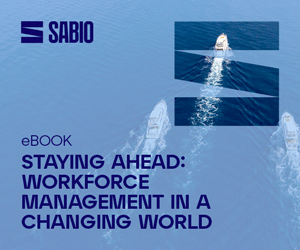

 Sabio Group is a global digital customer experience (CX) transformation specialist with major operations in the UK (England and Scotland), Spain, France, Netherlands, Malaysia, Singapore, South Africa and India. Through its own technology, and that of world-class technology leaders such as Amazon Connect, Avaya, Genesys, Google Cloud, Salesforce, Twilio and Verint, Sabio helps organisations optimise their customer journeys by making better decisions across their multiple contact channels.
Sabio Group is a global digital customer experience (CX) transformation specialist with major operations in the UK (England and Scotland), Spain, France, Netherlands, Malaysia, Singapore, South Africa and India. Through its own technology, and that of world-class technology leaders such as Amazon Connect, Avaya, Genesys, Google Cloud, Salesforce, Twilio and Verint, Sabio helps organisations optimise their customer journeys by making better decisions across their multiple contact channels. 







